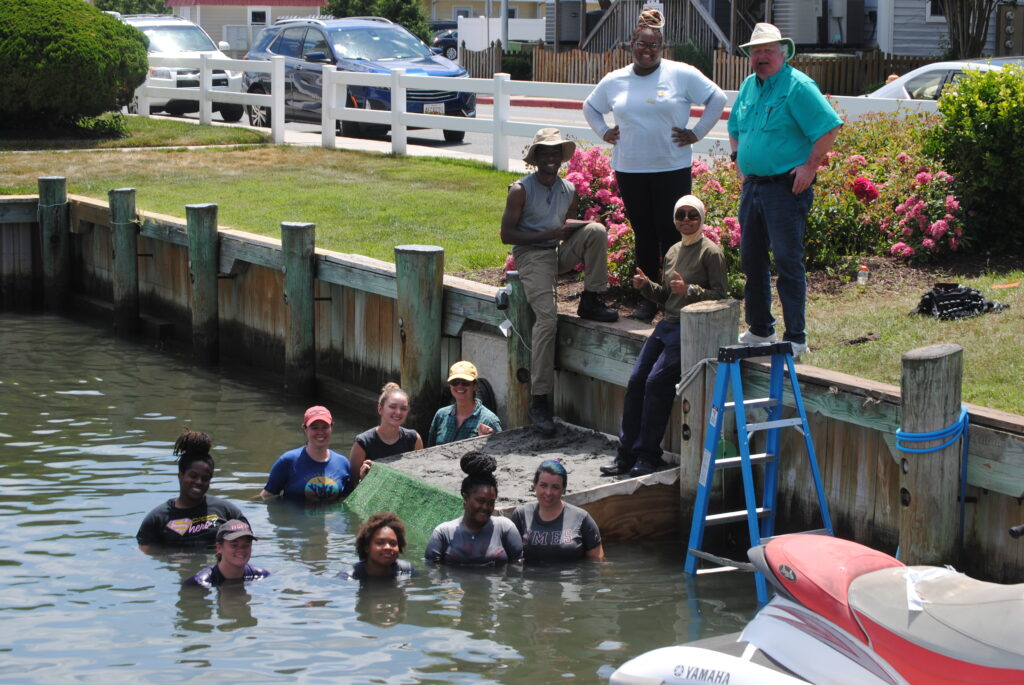
OCEAN CITY, MARYLAND — An overwhelming number of dead horseshoe crabs appeared in the residential canals at 94th Street in Ocean City in 2021. Since then, marine researchers at the University of Maryland Eastern Shore have been trying to figure out why the mortality event occurred.
“We believe the crabs may be looking for a sandy shoreline on which to spawn. Since there is no sandy shoreline inside the canals, we wondered if we could provide one,” said Dr. Margaret Sexton, one of the faculty leads on the project. Sexton is deputy center director of the NOAA Living Marine Resources Cooperative Science Center (LMRCSC), which trains and graduates students from underrepresented communities in marine science.
Drs. Eric May, professor of fish biology and pathology at UMES, and Sexton have been leading teams of graduate students and research interns into the 94th Street canals every summer since 2022.
In order to spawn, a male horseshoe crab attaches itself to a female. The female must then drag the male to a shore on which to lay her eggs. The researchers hypothesize that females are looking for a shoreline in the canals — when they encounter only a 90-degree wall, they die of exhaustion trying to scale it.
In summer 2023, the research team built a small platform in the back of the canal to hold sand above the water level at low tide.
“The crabs were able to locate the platform and were highly motivated to climb into it,” Sexton said. “While we did not observe any spawning on the platform, we are hopeful that some design upgrades will help.”
On June 7, the team installed a larger, more stable platform, above, in a residential canal off 94th street, along with a 24-hour horseshoe crab camera to record activity at the man-made beach.
The researchers also continue tagging horseshoe crabs to glean information about the number of crabs in the canals, as well as whether they come and go. Tagging is done under U.S. Fish and Wildlife guidelines. If members of the public see a tagged horseshoe crab, UMES asks they report it at https://www.fws.gov/crabtag/. Snap a photo because you will need the crab’s six-digit tag number, the location, and the condition of the crab. These reports help experts understand how crabs move around.

What horseshoe crab DNA could reveal
A new effort this year involves DNA studies. Dr. Dannise Ruiz-Ramos is a new faculty member at UMES and the NOAA LMRCSC, who specializes in environmental DNA and conservation genomics. She will use the DNA samples to compare the crabs from the Ocean City canals to those of nearby estuaries and those offshore. Collecting DNA from the crabs causes no more harm to them than the tagging process.
“If we have different populations, it will imply there is little movement of individuals between the populations, and the crabs in the Bay have fewer choices of mates,” Ruiz-Ramos said. “It would also suggest the crabs are not coming from offshore to die in the canals.”
Scientists 20 years ago found the Mid-Atlantic horseshoe crab population was genetically diverse, Ruiz-Ramos said. If she finds the same results, that will indicate the local horseshoe crab population is doing well, despite the mass mortalities in recent years.
“Usually, populations with high genetic diversity are more resilient to mass mortalities than populations with lower genetic diversity,” she said.
Kara Nuzback, Communications & Outreach Specialist, University of Maryland Eastern Shore, School of Agricultural and Natural Sciences, 410-651-6196 (office)

